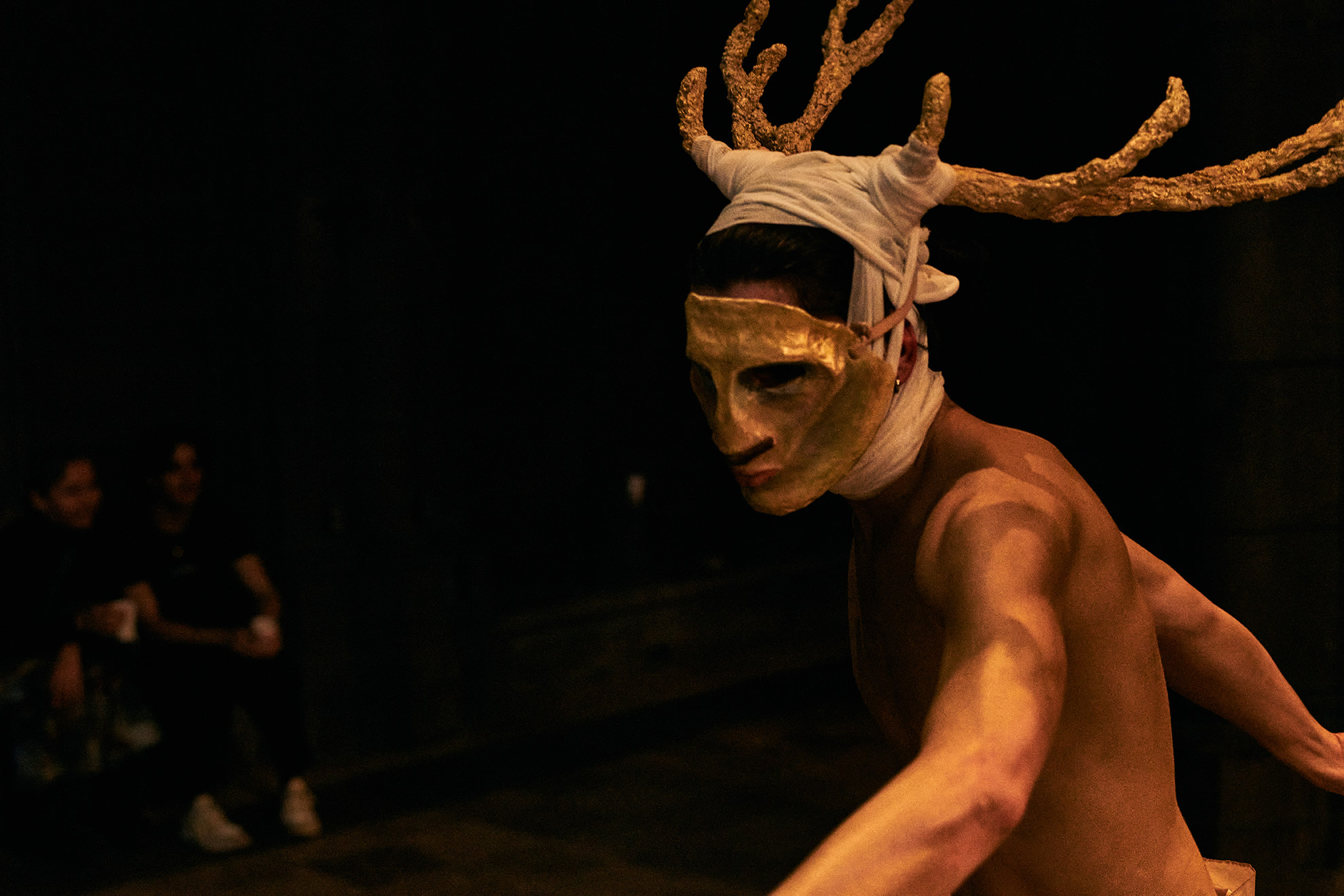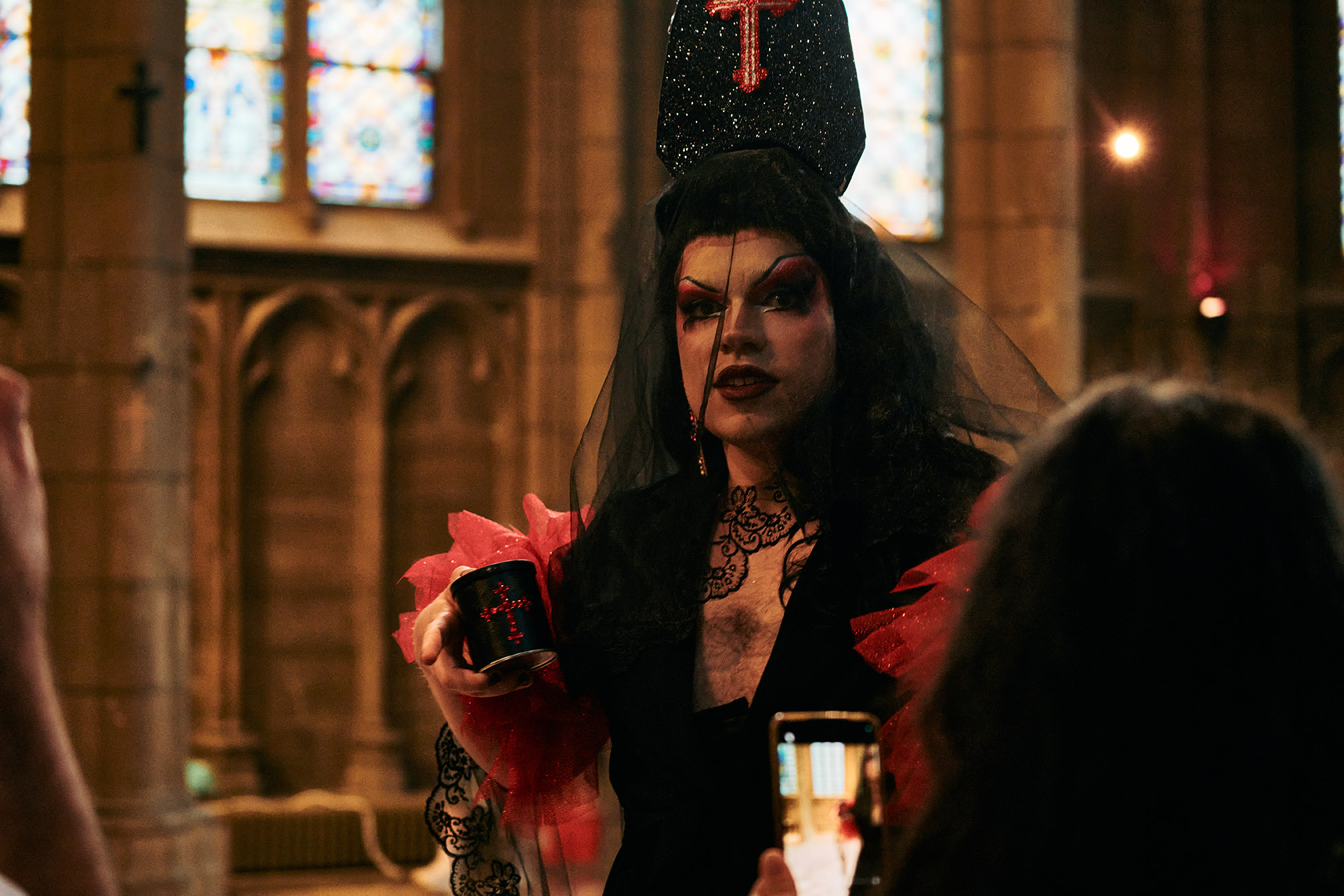Liberté × Amour
An Interview With Aurola Győrfy and Márk Rékai
Oli Horváth
The Liberté × Amour performance event in Paris offered a space that reimagined the notions of freedom and love from a queer perspective. It provided young Hungarian artists with the opportunity to explore their identities while responding to the political realities of their homeland through artistic expression. The program featured live performances, video works, and participatory actions, showcasing works by Anime Liberation Front, Annamária Kmetyó, Aurola Győrfy, Dorka Csoboth, Le Nina Rossa, Márk Rékai, and Sawa. We asked the two curators of the event, Aurola Győrfy and Márk Rékai, about their concept, motivations, and about how the project came to life.
Icon- and cover image:
Dorka Csoboth ╱ Photo : Kotaro Iizuka
OH: How did the concept of Liberté × Amour come about?
MR: When we heard about the constitutional amendment banning Pride, there was a sense of despair. Being two countries away, we didn’t know at first how we could respond, but we knew that we had to take action.
AGy: At a certain point, it became clear that we had to react. Even as Hungarians living abroad, we could respond swiftly to political shifts in Hungary. Artivism had not previously been a defining element of our practice; however, in this climate, we felt that, as artists, working at the intersection of performance and activism could effectively challenge the traditional roles of the exhibition space, the audience, and the artist.
After the proposal to ban Pride, we marched from the Triumphal Arch to the Hungarian Embassy carrying a banner that read, “The Freedom to Assemble is a Human Right.”
MR: Yes, according to our original plan, the photo and video documentation of this action would have formed the backbone of the exhibition, but it would have been housed in a much more conventional, traditional white-cube space. As the organization progressed, performances and other ephemeral installations became increasingly important to our plans, so we quickly moved away from the gallery setup that centralized object-based pieces.
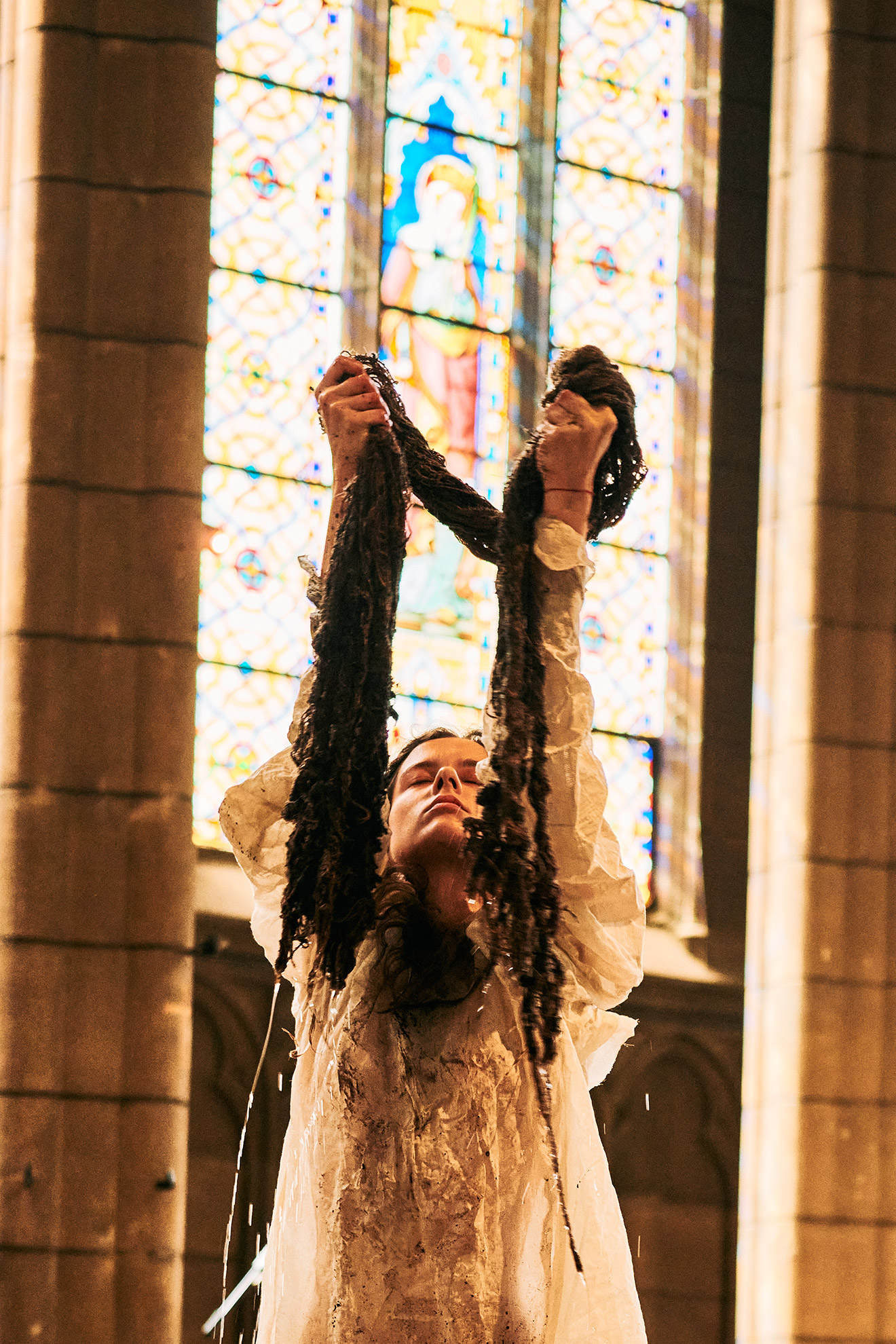
Spicy Princess ╱ Photo : Kotaro Iizuka
OH: Contrary to the original, classic exhibition situation, you ultimately held the event in a church. How did this decision come about?
AGy: When we were looking for a venue, we approached the space with a very fluid mindset – the emphasis was more on the concept itself. The organization, Plateau Urbain, suggested that the event could take place in the desacralized Chapelle Reille, which had previously functioned as the Saint-Jeanne-d’Arc church. It proved to be the perfect setting for disrupting homonormativity; instead of a queer-themed exhibition in the static framework of a white cube, here the venue itself was dynamic, with an unfixed, shifting function.
OH: How do the concepts of “freedom” and “love” shift in their historical and political connotations, and how can this be reinterpreted in the Parisian cultural context?
AGy: The slogans that highlight national values and, for instance, mobilize crowds at demonstrations in France, do not automatically have nationalist connotations, as is often the case in Hungary. In the Hungarian context, right-wing politics has appropriated and infused certain Hungarian artists, artworks, historical narratives, and figures with power. These politically exploited factors are, for me, personally, crucial to reclaim in the field of art.
This also influenced our choice of title: we sought keywords that are familiar to everyone, can mobilize people, and have a manifestational quality, while at the same time not exclusively engaging the queer community. However, the position from which we speak needed to operate with an absolutely unfixed concept of queerness. We didn’t just want to collect Hungarian artists as Pokémon, but to channel ourselves and the artists into a gender-anarchist work process in which the methodology also reflects the aesthetics of freedom and chaos.
MR: I also think it’s of utmost importance to emphasize that the concepts of freedom and love resonate here with the same power, reality, and, above all, meaning as when Petőfi originally formulated them. I consider it essential that, although this poet is often thematized from a strongly nationalist perspective, his words and values can just as well be invoked in an entirely different, more open context.
This aspect was also crucial for us when creating the poster. For instance, we didn’t want the rainbow flag to become the centerpiece of our visual communication, as it would have been more closely associated with the phenomenon of corporate Pride, and we felt that it would brand or “commodify” our event. In the end, we asked the graphic designer, Flóra Mezei, who designed the poster, to play with the well-known daguerreotype of Petőfi; through her deconstruction of the photo into strips, she managed to sufficiently evoke the essential character of the Pride flag while at the same time creating an entirely new composition.
This way, the poster simultaneously refers to the pillars of Hungarian culture and queer iconography, without letting either dominate the other.
SAWA ╱ Photo : Kotaro Iizuka
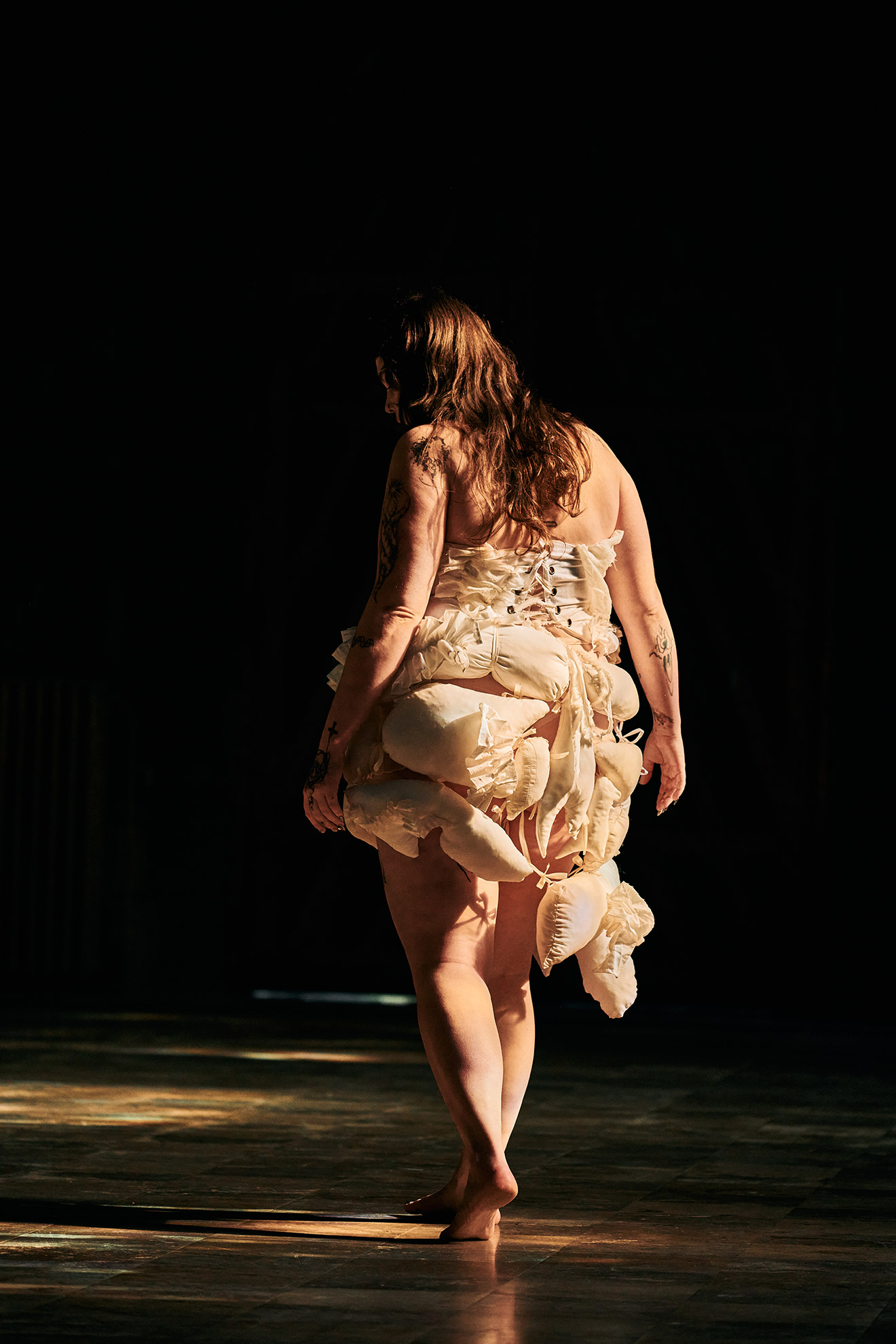
SAWA ╱ Photo : Kotaro Iizuka
OH: The rejection of the need to fit in appears as a radical statement in the narrative of your project. How could this position turn into a performative gesture? What kind of choreographic, intermedial, or spatial strategies could accurately express this opposition to normativity?
AGy: We didn’t create an auditorium in a traditional sense, and this allowed the space to turn into an open, fluid ritual, where anyone could enter or leave at any time. This approach allows participation to be based on active consensus – not coercion, but choice. The viewer’s freedom to decide from which position to watch or “do” cannot be controlled by the curator or the performer. In addition, video works also played an important role: they weren’t merely narrative elements but were present as a ritualistic transitional component between performances.
Both the curatorial concept and the spatial strategies that we utilized reject the binary system and homonormativity. One of the symptoms of the contemporary art world is that queerness is still often only accepted in an aestheticized, “beautiful” form, which still contains restraint and heteronormative elements, even though they’re completely alien to the essence of queerness.
MR: Our goal was to be able to portray and present this “different kind” of queerness, and to do so, we tried to create a context that is often missing, especially in the case of video works. These works often have a hard time finding a home in classic spaces of display, so we wanted the artists, who are otherwise physically unreachable, to have a place in the ritual fields of the exhibition.
AGy: Another important consideration was to work with Hungarian artists who are marginalized in Hungary, or whose work is not necessarily seen as relevant by the milieu or institution.
OH: To what extent did the presence of queer bodies rewrite the traditional hierarchy of the space? Was there a conscious attempt to subvert the original functions and narrative of the space?
MR: Absolutely. For me, that was one of the most exciting parts of the curatorial work. The spatial hierarchy of churches, dating back more than a thousand years – the delicate system of the choir, the nave, and the apse – could be used by everyone according to their own needs. The movement constantly disrupted the central force, but it didn’t result in the disappearance of sacrality, since only the catalyst changed.
AGy: The first gesture, which happened during the opening speech, was handing out anti-LGBTQ+ laws to the audience, which had been enacted by the Hungarian ruling party, Fidesz, over the past 15 years. The audience could read these bills as part of the ceremony – this was also a dismantling of the hierarchy. The viewer was no longer just a viewer, but an active participant too.
It’s also a typical attribute of my own performance praxis that, through transformation, the spectator becomes a non-spectator. We tried to actualize this characteristic by subverting both the space and the structure. This was achieved by sounding a hunting horn, which was meant to call the audience into battle after resting between two transformations. The crowd is not always seen, but is used as a medial object.
OH: How does the place, which you constructed as a kind of “safe space,” relate to the urban fabric of Paris, a potentially normative public space? To what extent was the project site-specific, and how do you see the transferability of the use of the space in other contexts?
AGy: This was not an archetypal safe space. We wanted safety in the traditional sense of the word, but not exclusivity. The goal was to reach people who understand the context (in theory), but it remained open to anyone without the requirement for the experience to be “consumable.” However, it had a risk factor all along.
The church is located in a heavily gentrified neighbourhood of Paris, and the venue itself functions as a cultural centre open to everyone. When, during a performance, kids suddenly stormed into the church, the situation immediately confronted us with a question: we had to face the same political problem that is thematized in Hungary by the anti-LGBTQ+ “child-protective” propaganda.
MR: If by “different context” we mean Hungary, then it would certainly be more difficult to achieve this. Here, in Paris, the audience itself is far more open.
AGy: In Hungary, there is a lack of context: one cannot immediately begin by researching and dismantling de-hierarchized, unfixed grey zones when fundamental spaces and discourses are still missing. The problem of rendering the queer body in an unfixed way is precisely the pitfall one ends up falling into oneself.
Dorka Csoboth ╱ Photo : Kotaro Iizuka
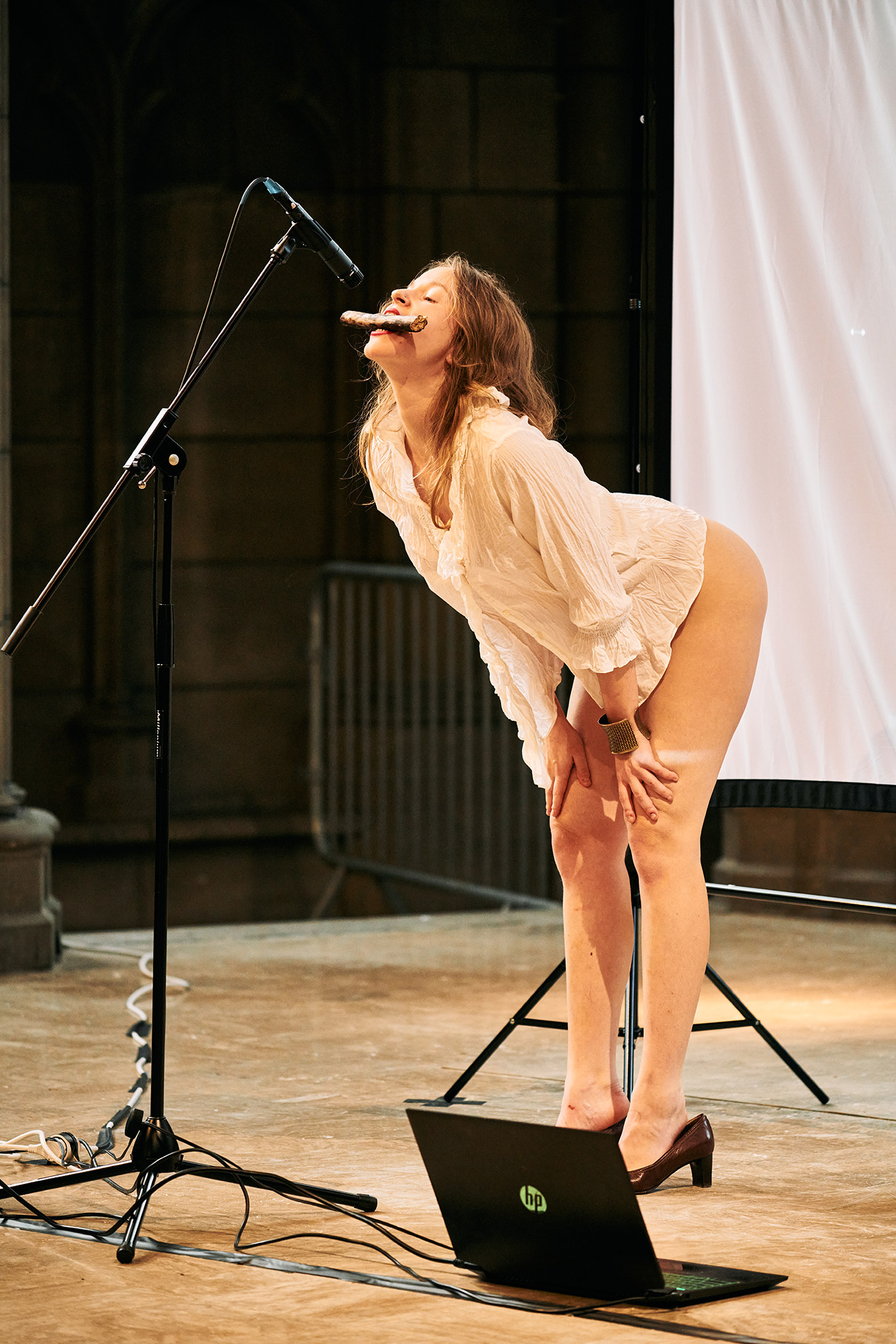
Dorka Csoboth ╱ Photo : Kotaro Iizuka
OH: How is the duality of radicalism and intimacy organized in such a situation? How do the private and the collective meet?
AGy: Radicality for us was never an end in itself — it was always tied to something deeply personal. The performances were often confessional in nature: within the bodies, there was both anger and transparency.
MR: The key to the whole event was its lack of instrumentality, which meant that everyone decided for themselves what they would bring into the space. This is what made it both intimate and radical at the same time. There was no pre-written choreography, only a shared framework to which everyone could attune themselves.
OH: How do you feel about the position of the spectators in relation to the performativity of queer bodies? Can the crowd also have an active part in the act of loosening the norms?
AGy: Absolutely. “Without you, the gag is not happening.” So, if the viewer is not there, if they do not participate, then there is no event.
This open, fluid situation was broken by only one fixed point: an installation, a “throne” on which we placed a figure of Viktor Orbán as a readymade object. This symbolized that while the community could move freely, power remained fixed, immobile, in a position of fixed gaze. Ironically, it was the ruler who was the least free actor in this chaotic, de-hierarchized space — this was a conscious gesture with which we contrasted the rigidity of the gaze of power with the constant movement and rearrangement of the queer community.
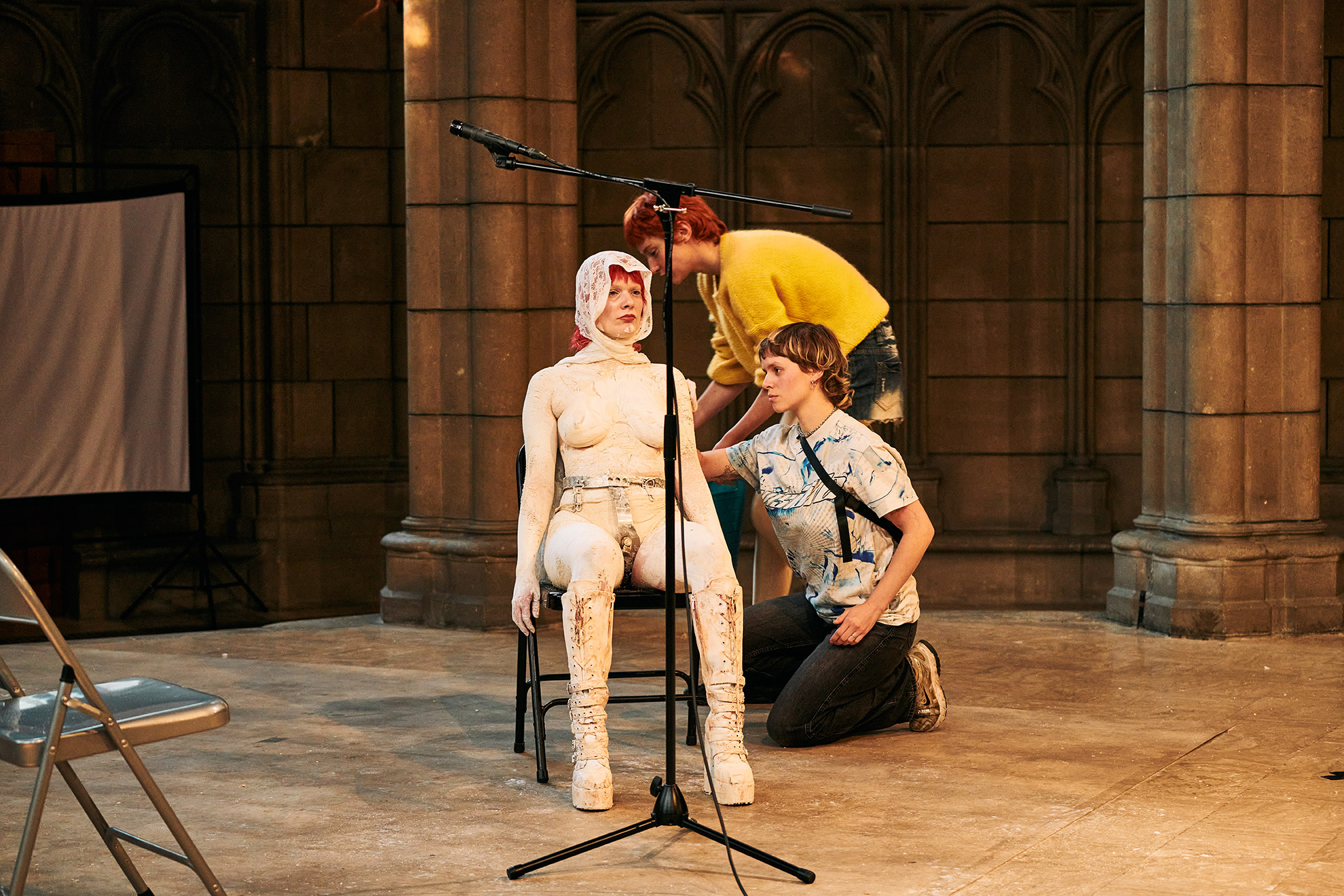
Aurola Győrfy ╱ Photo : Kotaro Iizuka
